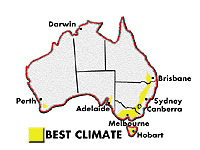Edgeworthia
This unusual and interesting plant is closely related to the daphne, and has clusters of perfumed flowers which look similar except they’re yellow. Its tough bark is used in Japan for making Washi, a fine quality hand-made paper, and an insecticide can be made from the stems and leaves. The branches are so pliable that they can be knotted without breaking, hence the Chinese common name ‘Fragrant Knot’.
Plant details
Common name: Paperbush
Botanical name: Edgeworthia papyrifera (also sold as E. chrysantha)
Description: Deciduous spreading shrub from central China to 1.8m (6′) high. Clusters of fragrant creamy yellow flowers appear on the ends of the branches in late winter and early spring. It has long narrow leaves and tough, flexible stems. There is also a reddish-orange flowered form known as ‘Red Dragon’.
Best climate: Cold to cool temperate areas, although it needs protection from frost.
Good points:
Attractive yellow flowers Perfume Flowers appear in late winter when gardens often look bare
Care: Edgeworthias like a well-drained soil rich in organic material. A sunny position sheltered from wind and cold suits them best.
Getting started:
Try specialist cool climate nurseries. All species and cultivars of edgeworthia are available from Yamina Rare Plants, 25 Moores Road, Monbulk, Victoria. 3793. Phone: (03) 9756 6335 and fax (03) 97520308, web:www.yaminarareplants.com.au and email address [email protected]. Prices range from $20 for species to $25 for ‘Red Dragon’ (200mm or 8″ pot), plus transport costs (minimum order $100).
Book
The Aussie Plant Finder 1999/2000 by Margaret Hibbert (ISBN 1-876314-04-4) is published by Florilegium, PO Box 644, Rozelle NSW 2039. Phone: (02) 9571 8222 Fax: (02) 9571 8333 Email: [email protected] Cost: $20 plus $5 postage and handling.



